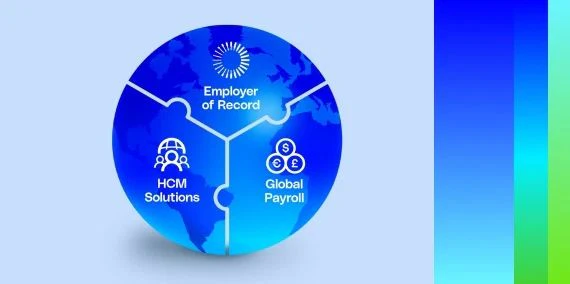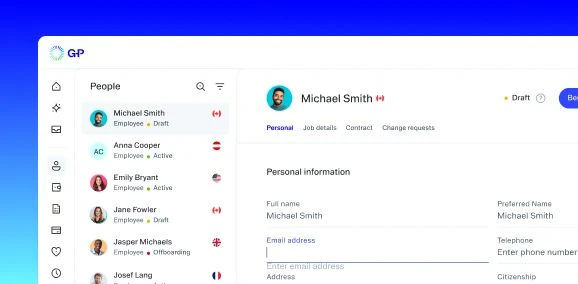When designing a compensation and benefits plan, companies need to consider the statutory minimums as well as local employees’ expectations. A solid benefits plan can help attract top talent and contribute to the overall success of your company in South Korea. Here are a few key considerations to keep in mind.
South Korea compensation laws
South Korea raised its minimum wage by more than 5.1% in 2023 and will increase 2.5% in 2024. The minimum wage in 2023 was KRW 9,620 per hour and the minimum wage in 2024 is KRW 9,860.
The maximum workweek is currently 52 hours, comprising 40 regular working hours per week with up to 12 hours of overtime. Overtime must be compensated at a rate of at least 50% above the employee’s regular wage.
Guaranteed benefits in South Korea
A South Korea benefits plan must include any guaranteed benefits that are required by law. These benefits include time off for holidays and vacation days. Depending on the size of your company, you may also be required to give employees paid days off for other national holidays. All companies with 5 or more employees will need to give public holidays as paid holidays.
Additionally, full-time salaried employees must receive 15 days of paid vacation after 1 year of service. Employees are entitled to an additional day off for every 2 years after that. However, the statutory vacation days earned per year are capped at 25 days.
Another common guaranteed benefit is maternity and paternity leave. Pregnant employees receive 90 days of maternity leave, while paid paternity leave is 10 days. A company’s size will determine whether the employer or the country’s employment insurance will pay for this leave. Employees who have worked for a company for more than a year may also be eligible for parental leave.
South Korea benefits management
A robust South Korea benefits plan should also include the most sought-after supplemental benefits. In South Korea, employers often provide supplementary health and life insurance benefits to employees.
Although Collective Bargaining Agreements (CBAs) are not as common in South Korea as in other countries, you should still make sure your employees or industry are not covered by one.
South Korea competitive benefits planning
Employees play a crucial role in the success of every company, so it’s essential that your benefits plan caters to their needs and overall wellbeing. Designing an appropriate package for employees in South Korea is just one process you’ll need to navigate before your business can start operations.
South Korea employee benefits plans
A successful employee benefits plan requires a program that is not only competitive within your industry but also financially sustainable for your company. By offering potential candidates a competitive plan, you’ll be able to help your business stand out during the recruiting process.
Perks such as company cars or travel reimbursements can help motivate your workforce and boost productivity. Other supplementary benefits include:
- Professional learning resources
- Assistance with housing and accommodations
- Childcare and education stipends
- Financial support during vacations
Requirements for employee benefits in South Korea
While supplemental benefits can help you stand out, companies will need to prioritize the legally required benefits first. The country’s Labor Standards Act is the primary law code outlining employer responsibilities. To stay compliant, companies must provide:
- Annual leave
- Maternity leave
- Family care leave
- Public holiday leave
- Paternity leave
- Fertility support leave
- Parental leave
This list is non-exhaustive and may be subject to additional requirements based on region or industry.
How to design your employee benefits program
Common practices and legal regulations for employee benefits vary from country to country. However, you can follow the same general process to evaluate your resources and assess employee needs to build your program.
1. Establish your budget and objectives.
The first consideration should be your company’s available resources. Assess your current budget and determine how much you can afford to allocate toward benefits.
Your company’s goals should also be a factor during this early stage of benefits planning. You may be able to leverage your benefits to meet some of these objectives. If you want to keep your employee retention rate high, for example, consider offering more benefits to boost morale among your team.
2. Learn about local workers’ needs.
At its core, your benefits plan is a way to show employees you care about their wellbeing. Some benefits may be more valuable to workers than others. Consider holding interviews with workers or conducting surveys to learn about their top needs and expectations.
This stage is also a good time to research the benefits other companies in your region offer to see if you can meet or exceed them.
3. Build your benefits plan.
Once you’ve completed a needs assessment, you might want to do a gap analysis. Include space in your plan for continued business growth and incorporate your market research into your benefits program.
As you develop a strategy that focuses on meeting employee needs, remember to factor cost containment features, employee contributions, and administrative costs into your final budget.
Average cost of benefits per employee
Benefits costs can vary widely between companies. As a result, the average per-employee cost of benefits in South Korea may not be a helpful metric. Instead, plan your budget around your company’s unique financial considerations.
How to calculate employee benefits
Employers in South Korea must ensure full pay for maternity leave, family care leave, public holidays, fertility support leave, annual leave, and parental leave. You can calculate rates based on the agreed-upon salary outlined in each employee’s employment contract.
How are employee benefits taxed in South Korea?
Additional benefits, such as paid leave, are taxable. However, child-related benefits may be exempt. You’ll need to do your due diligence to determine if any supplemental benefits included in your plan are taxable.
Employee health benefits plans
In South Korea, many employers provide health insurance for workers to ensure their needs are met. Health benefits may include general medical care, emergency treatment, and dental and vision coverage. While these offerings aren’t legally required, they can boost employee morale and make your open positions more desirable in the job market.
Partner with G-P to build your everywhere workforce.
As your partner in global expansion, G-P will handle payroll and compliance, so you can focus on growing your team and scaling your business. Our market-leading Global Growth Platform™ is powered by the first fully customizable suite of global employment products and backed by the industry’s largest team of in-country HR and legal experts to streamline payroll management and help you offer competitive, compliant local benefits.
Learn more about our platform and request a proposal today.

















